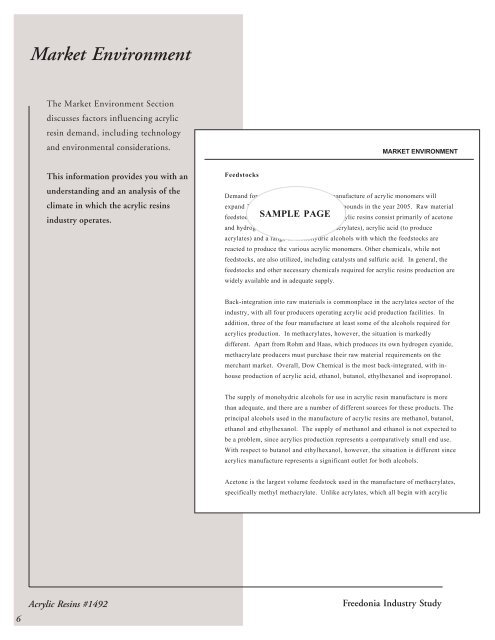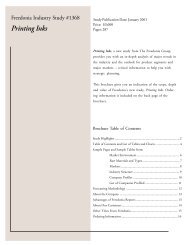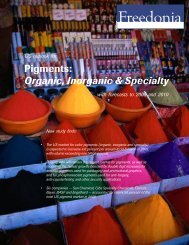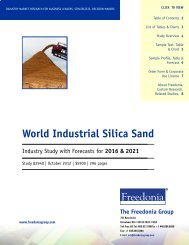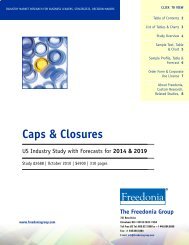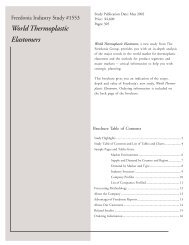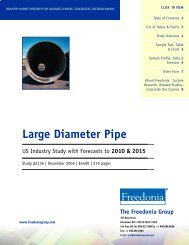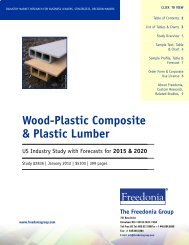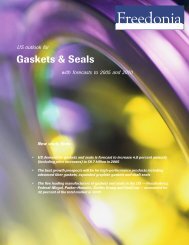Acrylic Resins - The Freedonia Group
Acrylic Resins - The Freedonia Group
Acrylic Resins - The Freedonia Group
Create successful ePaper yourself
Turn your PDF publications into a flip-book with our unique Google optimized e-Paper software.
6<br />
Market Environment<br />
<strong>The</strong> Market Environment Section<br />
discusses factors influencing acrylic<br />
resin demand, including technology<br />
and environmental considerations.<br />
This information provides you with an<br />
understanding and an analysis of the<br />
climate in which the acrylic resins<br />
industry operates.<br />
<strong>Acrylic</strong> <strong>Resins</strong> #1492<br />
Feedstocks<br />
MARKET ENVIRONMENT<br />
Demand for raw materials used in the manufacture of acrylic monomers will<br />
expand 3.8 percent per year to 4.4 billion pounds in the year 2005. Raw material<br />
feedstocks utilized SAMPLE in the production PAGEof<br />
acrylic resins consist primarily of acetone<br />
and hydrogen cyanide (to produce methacrylates), acrylic acid (to produce<br />
acrylates) and a range of monohydric alcohols with which the feedstocks are<br />
reacted to produce the various acrylic monomers. Other chemicals, while not<br />
feedstocks, are also utilized, including catalysts and sulfuric acid. In general, the<br />
feedstocks and other necessary chemicals required for acrylic resins production are<br />
widely available and in adequate supply.<br />
Back-integration into raw materials is commonplace in the acrylates sector of the<br />
industry, with all four producers operating acrylic acid production facilities. In<br />
addition, three of the four manufacture at least some of the alcohols required for<br />
acrylics production. In methacrylates, however, the situation is markedly<br />
different. Apart from Rohm and Haas, which produces its own hydrogen cyanide,<br />
methacrylate producers must purchase their raw material requirements on the<br />
merchant market. Overall, Dow Chemical is the most back-integrated, with inhouse<br />
production of acrylic acid, ethanol, butanol, ethylhexanol and isopropanol.<br />
<strong>The</strong> supply of monohydric alcohols for use in acrylic resin manufacture is more<br />
than adequate, and there are a number of different sources for these products. <strong>The</strong><br />
principal alcohols used in the manufacture of acrylic resins are methanol, butanol,<br />
ethanol and ethylhexanol. <strong>The</strong> supply of methanol and ethanol is not expected to<br />
be a problem, since acrylics production represents a comparatively small end use.<br />
With respect to butanol and ethylhexanol, however, the situation is different since<br />
acrylics manufacture represents a significant outlet for both alcohols.<br />
Acetone is the largest volume feedstock used in the manufacture of methacrylates,<br />
specifically methyl methacrylate. Unlike acrylates, which all begin with acrylic<br />
<strong>Freedonia</strong> Industry Study


